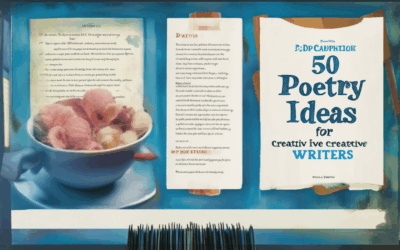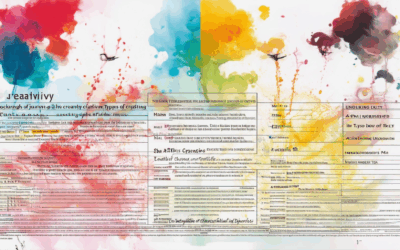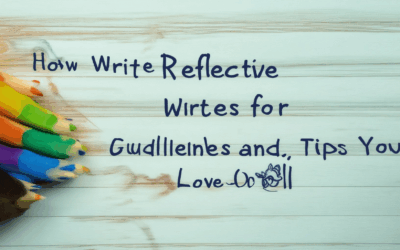Elevating Your Craft: A Comprehensive Guide to Poetry for Creative Beginners
Are you curious about diving into the captivating world of poetry but unsure where to start? Whether you’re a complete novice or someone looking to refresh your creative skills, this guide is designed to walk you through the fundamentals of poetry, offering practical tips, inspiration, and guidance to help you unlock your potential. From understanding the basics to exploring diverse styles, this comprehensive resource will provide you with everything you need to embark on your poetic journey with confidence and enthusiasm. Discover how to navigate the complexities of poetry, experiment with different forms, and find your unique voice. Let’s dive into the fascinating realm of poetry and elevate your craft to new heights!
- Craft Compelling Poetry: Use vivid imagery, metaphors, and evocative language to create memorable experiences.
- Adopt Structured Forms: Experiment with rhyme, meter, and traditional forms to add musicality.
- Explore Deeper Themes: Delve into complex themes for layered, resonant poetry.
- Hone Language Skills: Choose precise, original words to avoid clichés and enhance impact.
- Seek Inspiration: Engage with communities and diverse influences to grow your unique voice.
- Write Free Verse: Embrace creative freedom with varied sentence lengths and natural rhythms.
- Develop a Speaker: Establish a consistent narrative voice to unify your poem.
- Focus on Meaning: Prioritize emotional expression over formality.
- Revise Thoughtfully: Ensure clarity and impact through careful editing.
- Select Thoughtful Poems: Look for clear imagery, emotional depth, technical skill, and uniqueness.
- Prioritize Brevity: Aim for concise, impactful poems that leave a lasting impression.
- Find Purposeful Poetry: Seek poems with a clear message or purpose to inspire or challenge.

How to Start Poetry as a Beginner
Starting poetry as a beginner can be an exciting journey, but it’s important to approach it with patience and curiosity. Here’s a guide to help you get started:
1. Start Simple
Begin with short poems or free verse. Focus on expressing your thoughts and feelings without worrying about perfection. This approach allows you to explore your creativity freely.
2. Experiment with Styles
Poetry offers a variety of styles and forms. Try different approaches like haiku, sonnets, or concrete poetry. Experiment with rhyme schemes (e.g., ABAB, AABB) and meter to discover what feels natural to you.
3. Join a Community
Finding a poetry community can be incredibly supportive. Consider joining local or online poetry groups, workshops, or forums like Poets Union or The Poetry Society . These spaces offer feedback, inspiration, and guidance.
4. Read Widely
Explore the works of established poets like William Shakespeare, Sylvia Plath, and Pablo Neruda. Also, discover contemporary poets who might inspire your own style. Reading diverse poetry helps broaden your perspective and creativity.
5. Write Regularly
Develop a regular writing routine. Dedicate a few minutes each day to jot down your thoughts and ideas. Keeping a poetry journal can be a great way to track your progress and explore different themes.
6. Learn from Resources
Consider enrolling in poetry workshops or courses offered by organizations like Writing Classes UK or The New Yorker . These resources can provide structured guidance and inspiration.
7. Share Your Work
Once you feel comfortable, share your poetry with others. Attend open mic nights or submit your work to poetry platforms like Poetix or Submittable . Sharing your work helps build confidence and connects you with fellow poetry lovers.
8. Embrace Imperfection
Remember, poetry is a personal journey. There are no right or wrong ways to write. Embrace mistakes as part of the learning process and let your unique voice emerge naturally.
By exploring these steps, you’ll find your own path in the world of poetry. Happy writing!
What Poetry Should a Beginner Read?
If you’re just starting out with poetry, it’s important to find pieces that are both approachable and inspiring. Here’s a curated list of poems and poets that are excellent for beginners:
- Classic Poets and Their Works :
- Shel Silverstein : Begin with his iconic “Where the Sidewalk Ends.” Its simplicity and whimsy make it a delightful introduction to poetry.
- T.S. Eliot : “The Love Song of J. Alfred Prufrock” offers a gateway into modern poetry with its rich imagery and introspective tone.
- Robert Frost : “Stopping by Woods on a Snowy Evening” provides a connection to nature and reflection, making it a relatable choice.
- William Carlos Williams : “The Red Wheelbarrow” showcases vivid imagery and concise storytelling.
- Challenging Yet Accessible Pieces :
- Sylvia Plath : “Ariel” is a powerful poem that deals with themes of identity and fate, though it may require some contemplation.
- T.S. Eliot : While “The Waste Land” is renowned, consider approaching it after gaining more familiarity with poetry.
- Uplifting and Inspirational Poems :
- Mary Oliver : “Wild Geese” is a heartfelt poem that celebrates life and resilience.
- Pablo Neruda : “I Want to Die Like a Wild Animal” is passionate and evocative, offering a profound perspective on existence.
- Rainer Maria Rilke : “The Panther” delves into observation and inner strength, encouraging deep reflection.
- Anthologies for Broad Exposure :
- Explore “The Norton Anthology of Poetry” for a comprehensive overview of various poetic traditions.
- “The Oxford Book of Modern Poetry” introduces contemporary works and diverse voices.
- Accessible and Playful Styles :
- Billy Collins : Known for his accessible style, his poetry often balances humor with introspection.
- ee cummings : His playful and rhythmic works can be both entertaining and thought-provoking.
- Community and Resources :
- Engage with online communities or local poetry groups to discuss and learn from others’ interpretations.
- Consider joining a poetry book club or forum to gain insights and feedback on your readings.
- Critical Analysis and Study Guides :
- Reading essays or articles about the poems can enhance your understanding and appreciation.
- Utilize study guides focused on poetic devices to aid in deciphering metaphors and symbols.
By starting with these foundational works and gradually exploring more complex pieces, you’ll build a solid foundation in poetry. Remember, the journey is as rewarding as the destination, so enjoy the process of discovery and growth.

The Six S’s of Poetry
The six S’s of poetry are a helpful mnemonic device to analyze and evaluate poetic works. These criteria guide readers and writers in understanding various aspects of poetry:
- S peed
- S ound
- S yntax
- S urprise
- S ense
- S pace
Each S represents a different element of poetry:
1. Speed
Speed refers to the rhythm and flow of the poem. A fast pace may make the poem feel energetic, while a slower pace can create a more contemplative mood.
2. Sound
Sound focuses on how words resonate phonetically. This includes押韵 (rhyme)和音调 (tone)的组合,确保诗句听起来和谐美妙。
3. Syntax
Syntax涉及诗句的结构和语法。复杂的句式可能带来意想不到的效果,而简单的句式则更易于理解。
4. Surprise
Surprise是诗歌中最重要的元素之一,它指的是诗句中的转折或意外之处,使读者感到新鲜和兴奋。
5. Sense
Sense指的是诗歌内容的逻辑性和意义。一个好的诗句应该有内在的意义,让读者能够感受到作者的情感和思想。
6. Space
Space关注诗句之间的空格和排列方式。适当的空间可以让诗句更加清晰,也能增强视觉上的表现力。
这些六个S不仅帮助评估诗歌,还为创作提供了灵感。通过调整速度、声音、语法、惊喜、意义和空间,诗人可以创造出独特而深刻的作品。

What Makes Good Poetry in Creative Writing?
In creative writing, particularly poetry, the essence of good poetry lies in its ability to evoke emotion, inspire thought, and connect deeply with readers. Here are the key elements that define exceptional poetry:
Imagery and Metaphor
Good poetry relies heavily on vivid imagery and metaphor. These devices allow writers to paint pictures in the reader’s mind, translating abstract concepts into relatable scenes. For example, using a metaphor like “a melody of stars” can convey a sense of beauty and wonder that resonates emotionally.
Structure and Form
While free verse is popular, many great poems adhere to traditional structures like rhyme schemes (e.g., sonnets) or meters (e.g., iambic pentameter). These frameworks provide a musicality to poetry, making it easier for readers to follow and enjoy the rhythm and flow.
Depth and Layers
Excellent poetry delves into complex themes and ideas, offering layers of meaning. Whether exploring love, loss, identity, or existential questions, the best poems resonate on multiple levels, inviting readers to reflect personally on the subject matter.
Language and Diction
The choice of words is critical. Poets use precise, evocative language to create unforgettable imagery. Avoiding clichés and embracing fresh perspectives ensures that the poetry feels original and impactful, leaving a lasting impression on the reader.
Consistency and Craftsmanship
Good poetry requires attention to detail and a commitment to craftsmanship. Every word and line should contribute purposefully to the overall work, ensuring a cohesive and meaningful experience for the reader.
Community and Inspiration
Reading other poems and engaging with fellow writers can be a powerful source of inspiration. It encourages experimentation and growth, helping poets develop their unique voices and styles.
By mastering these elements, writers can create poetry that not only stands out but also connects with readers on a profound level.
How to Write a Poem Without Rhyme
A poem without rhyme, often referred to as free verse, allows for greater creative freedom. Here’s a step-by-step guide to crafting a poem that doesn’t rely on traditional rhyming:
- Choose Your Theme or Subject:** Decide on the theme or subject matter you wish to explore. Whether it’s emotions, experiences, or abstract concepts, having a clear focus helps guide your ideas.
- Experiment with Imagery:** Use descriptive language to paint pictures in the reader’s mind. Think about sensory details—what can be seen, heard, smelled, or felt—to bring your words to life.
- Break Free from Conventional Structures:** Unlike traditional poems with fixed line lengths or meters, free verse allows you to vary sentence length and rhythm. Let your thoughts flow naturally.
- Use a Speaker or Narrator:** Consider giving your poem a speaker or narrator. This can help establish a voice and provide a consistent perspective throughout the poem.
- Focus on Meaning Over Form:** Prioritize conveying meaning and emotion over perfecting a poetic form. The essence of your message should drive the composition.
- Edit for Clarity and Impact:** After drafting, revise your poem to ensure it’s clear, impactful, and free from unnecessary complexity. Remove any lines that don’t contribute to the overall message.
Examples of famous poems written in free verse include works by Silken Drum contributors, who have masterfully crafted pieces that resonate deeply with readers.
Remember, the most important aspect of writing a poem without rhyme is to stay true to your vision and let your unique voice shine through!

How to Pick a Good Poem
Poetry is a unique art form that can evoke emotions, inspire thoughts, and transport readers to different worlds. Selecting a good poem involves understanding what makes a poem stand out and resonate with readers. Here’s a guide to help you choose thoughtfully:
- Clarity and Imagery : A good poem uses vivid imagery to paint pictures in the mind. Look for descriptive language that creates scenes or feelings.
Explore Silken Drum’s poetry essays to see examples of powerful imagery at work. - Emotional Depth : The best poems connect with readers on an emotional level. They make you feel something—joy, sorrow, anger, or peace.
Discover emotional poetry that speaks directly to your heart. - Technical Skill : A skilled poet uses techniques like rhyme, rhythm, and meter effectively. Pay attention to how words flow and interact.
Learn more about poetic techniques on Silken Drum. - Relevance and Relatability : Great poems often reflect universal themes or experiences. Choose poems that speak to your life or resonate with broader human emotions.
Find personal poetry that feels familiar yet profound. - Brevity and Impact : Some of the most impactful poems are concise. Look for ones that pack a punch in few lines.
Read short poems that leave a lasting impression. - Uniqueness : A truly great poem stands apart from others. It offers something new or challenges traditional perspectives.
Discover unique poetry that breaks the mold. - Purpose and Message : The best poems have a purpose or message. They might inspire, challenge, or provide comfort.
Inspire yourself with motivational poetry.
When you find a poem that aligns with these criteria, it’s likely to become a favorite. Share your favorites on Silken Drum and join our community of passionate writers and readers.




0 Comments